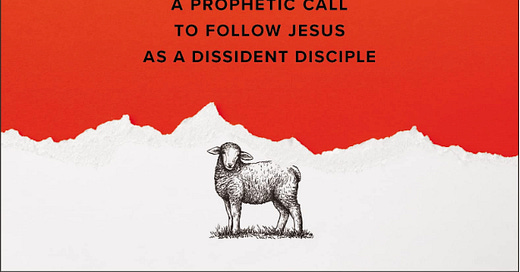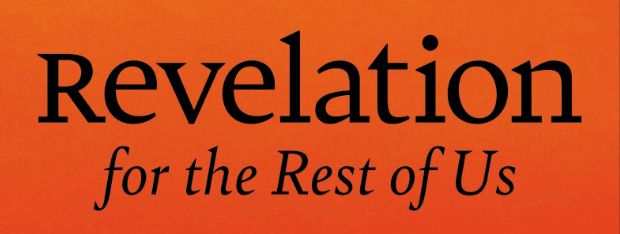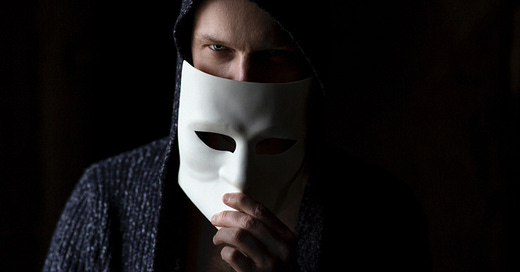
I plead with readers of Revelation to begin reading it in chapters seventeen and eighteen. I know beginning there is against the rule of reading a book from the beginning. But we’re not 1st Century Western Asia Minor believers. The Roman empire is not our context. Which is why our assumptions need to tumble, and I know no better way than to begin in chapter seventeen. We get a sketch, dramatic and overblown no doubt, of Babylon, or Rome. Once we set out its themes, we get a sketch of what the churches of Asia Minor were facing. Then we can begin better in reading the Book of Revelation. Give it a try. See what happens. (That’s one of the reading principles Cody Matchett and I work out in Revelation for the Rest of Us.)
Christopher Rowland, who has plumbed apocalyptic literature as well as anyone in the modern era, counters much of the common interpretation of Revelation when he says, “We should not ask of apocalypses, what do they mean? Rather, we should ask, how do the images and designs work? How do they affect us and change our lives?” One of the recurring themes of this book has been our desire to address that question: How does Revelation change our lives? This is especially true for those who use Revelation to make predictions and encourage speculations. Furthermore, for those few who do connect Revelation’s message to something about discipleship, we find that very little attention is given to the way John’s vision of discipleship is framed as dissidence in the midst of Babylon. In this chapter and those that follow, we hope to move from criticism of bad approaches to reading Revelation to exploring the living reality of John’s vision of discipleship. It’s here (and here most especially) that the genius of the book of Revelation challenges us today unlike any other book in the New Testament.
Reading Revelation means knowing for whom it was written.
We answer that by saying it was written for dissidents. We must also understand how it can best impact and transform us. As we have seen, it is through our imagination. And we must also recognize the book’s characters, beginning with Babylon, and its overarching story from creation and covenant to Christ and the church in Babylon and finally to new Jerusalem. The book of Revelation is written to shape a church surrounded by the swamping and creeping ways of Babylon.
So how does one live in Babylon? First, the dissident disciples of the seven churches had to learn to see how Babylon was impacting and influencing them. Like a fish in water, the way of Babylon is nearly invisible for the one swimming in it. How do you live in a world that is anti-God, devoted to opulence, consistently opposed to the way of Lamb, full of itself and intent on being impressive, protected by a mighty military, and aiming to become the global superpower? How do you live in a world of constant internal betrayals, driven by economic exploitation of anyone and everyone, structured into a mysterious hierarchical system of power and honor, and driven by arrogance and ambition? How does one “escape” Babylon while living in it? The seven churches didn’t make a clean break. Babylon, like the Aegean mist in the morning, permeated everything, including those in the seven churches, at times clouding over Christ himself. To live as a follower of the Lamb in Babylon you needed to keep the face of the Lamb in view. So life as a dissident in Babylon starts by looking at Christ, as we see in Revelation 1.
In the harbor of the island of Rhodes, not far from Patmos, was the “Colossus,” a massive, one-hundred- foot statue of Helios, the sun god. Everyone who saw it—whether a visitor or native of Rhodes—was impressed by this memorial to a military victory of the third century BC. By the time John was prophesying in western Asia Minor, however, the Colossus of Rhodes was no longer standing, having collapsed in an earthquake. But the story about it was well known, and it was counted as one of the seven wonders of the ancient world. In the “harbor” of Revelation—the first thing we see as we enter this book in chapter 1—we come face to face with nothing less than a “Colossus” of Jesus. Here is John’s Scripture-soaked description of his vision:
I turned around to see the voice that was speaking to me. And when I turned I saw seven golden lampstands, and among the lampstands was someone like a son of man, dressed in a robe reaching down to his feet and with a golden sash around his chest. The hair on his head was white like wool, as white as snow, and his eyes were like blazing fire. His feet were like bronze glowing in a furnace, and his voice was like the sound of rushing waters. In his right hand he held seven stars, and coming out of his mouth was a sharp, double-edged sword. His face was like the sun shining in all its brilliance. When I saw him, I fell at his feet as though dead. Then he placed his right hand on me and said: “Do not be afraid. I am the First and the Last. I am the Living One; I was dead, and now look, I am alive for ever and ever! And I hold the keys of death and Hades.” (1:12–18)
This entire book—don’t forget this please—is for each of those seven churches. Every vision, every interlude, every song is for each of them. The Colossus of Jesus that we meet in chapter 1 has his eyes on each church, and what he sees there is not always good, which is another reason John wrote this book. With one eye on Babylon and the other on each of those seven churches, John tells us “what Christ thinks of the church.” Two of the churches, Smyrna and Philadelphia, escape the gaze of Jesus. But the other five churches are laid bare and exposed with piercing criticism. Their sins are rooted in a struggle to walk in the way of the Lamb because Babylon was penetrating the churches and they were no longer focused on the face of the Lamb.
What were someof the signs of Babylon in the church?
1. Their love had become disordered (2:4).
2. Their teachings were distorted (2:14–15, 20–23).
3. Their worship was corrupted (2:14–15, 20–23).
4. Their behaviors grew inconsistent with the way of the Lamb (3:1–2, 15–18).
Each of these problems is the manifestation of Babylon’s presence in the communities of Jesus. While the fullness of the new Jerusalem is (mostly) future, the fullness of Babylon is entirely present here and now, evident in disordered love, distorted teachings, corrupted worship, and pressure on people to accommodate to ungodly practices. As Wes Howard-Brook and Anthony Gwyther have said, “It was the seduction of the Roman Empire from within a context of relative comfort, rather than terrifying persecution, that more accurately describes the situation of the original audience of the book of Revelation.”

















Excellent!!! Thank you, Scot and Cody!
So, first, Romans in a wonderful new light by reading it backwards! Now, Revelation! Thank you your freedom to not simply stand on a tall place to get a better view, but then, you use the new perspective to journey through the territory to look up close! I will be using this!
Looking forward to reading this especially starting at Chp 17